"with Blue" -Interviews with companies addressing the SDGs Vol. 1
Challenges to Creating New Values -Added Value in Fish Rearing Process-
July.2024
Aozora’s feature story “with Blue” carries articles highlighting companies
that contribute to the sustainable development of society.
Through each article, we aim to spark further conversation about a sustainable society as well as
build a solid base where we can think and discuss the realization of a sustainable society in the
course of our daily lives.
In this commemorative first article, we introduce the initiatives of FEED ONE CO., LTD. (‘FEED ONE’),
a company that aims to create new values in the animal and aquatic feed sectors.
Time to finish reading this article: 5 minutes
Table of Contents:
Fisheries Resources Today
Do you know that farmed fish account for almost 25% of the seafood in Japan?
The country’s marine production peaked around 1984 and has since been on a steady downward trend. This is
mainly the result of reduced fish catches due to environmental changes. On the other hand, farmed fish
remain stable in terms of production volume, and although the volume is not enough to offset the decline,
fish farming underpins Japan's self-sufficiency in fisheries products.
Looking at the rest of the world, fish catches have hit a peak at certain levels. A shortfall in fishery
production is partially offset by an increase in farmed fish production.
The decline in fish catches is an issue common to domestic and overseas fishery industries (note: total
global fish catches remain flat). One of the reasons is an increase in seafood consumption as a result of a
growing economy and increased populations. In other words, the increase in fish catches has been outpacing
the natural reproduction of fish and shellfish, resulting in a decline in natural marine resources. This
indicates that fish farmers play a significant role in ensuring coexistence with natural marine resources.
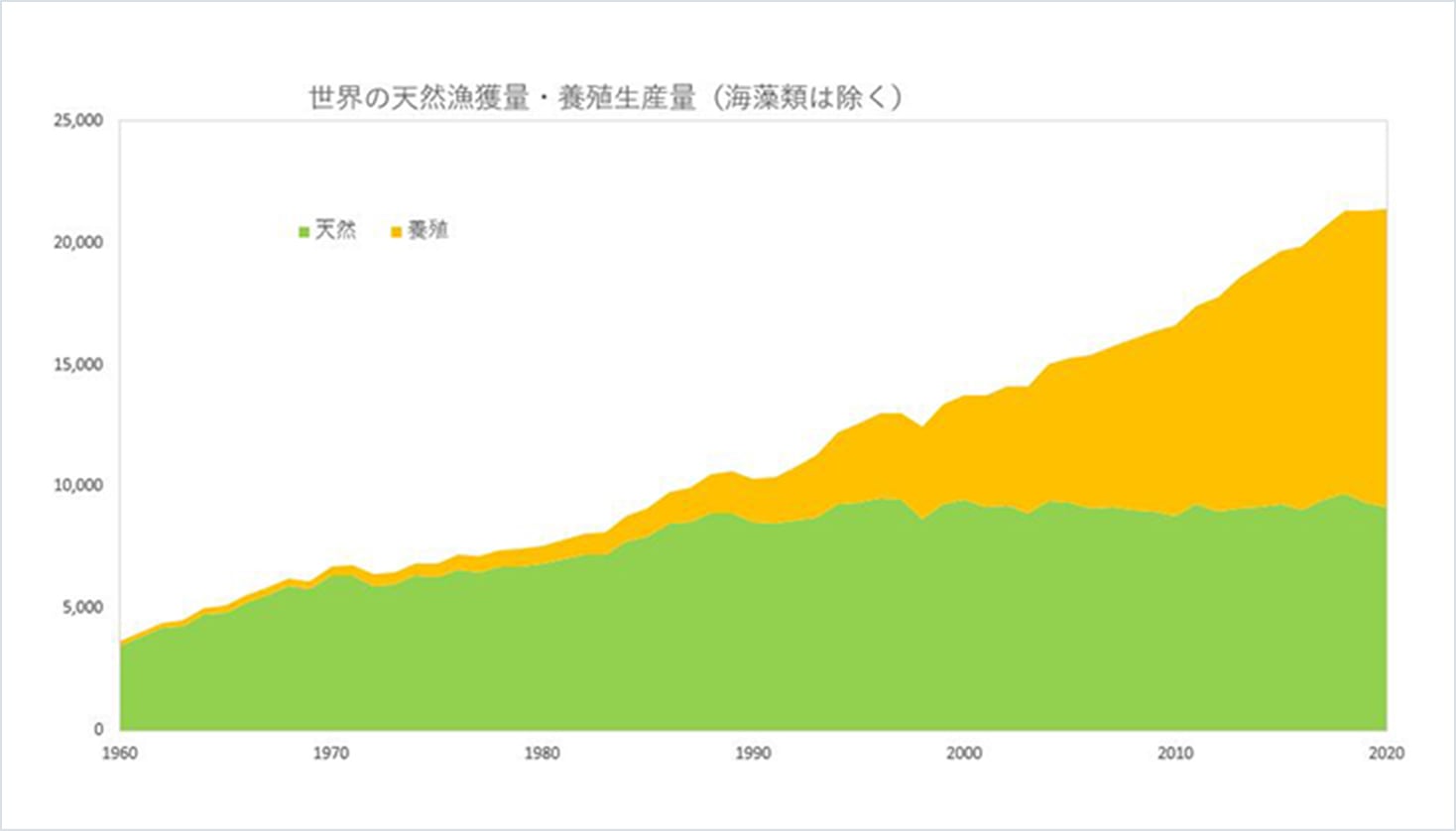

Fish Farmers Today
Fish farming is important for our coexistence with natural marine resources. However, consumers generally
know little about the fact that the price of raw materials for farmed fish feeds continues to rise every
year.
In Japan, per-kilogram costs for imported fishmeal, which is the raw material for farmed fish feeds, have
significantly increased by 70–80% compared to 2020. This has been adding pressure on the business viability
of fish farmers. According to the 2018 data compiled by the Ministry of Agriculture, Forestry and Fisheries,
the number of fish farm operators declined from 4,495 in 2003 to 2,704 in 2018. Although soaring raw
material costs are not the only cause, fish farmers appear to face an increasingly tough business
environment every year.
What actions are necessary to conserve marine resources as well as prevent the decline in the number of fish
farmers? This time we had an interview with FEED ONE, a feed manufacturer addressing these issues.
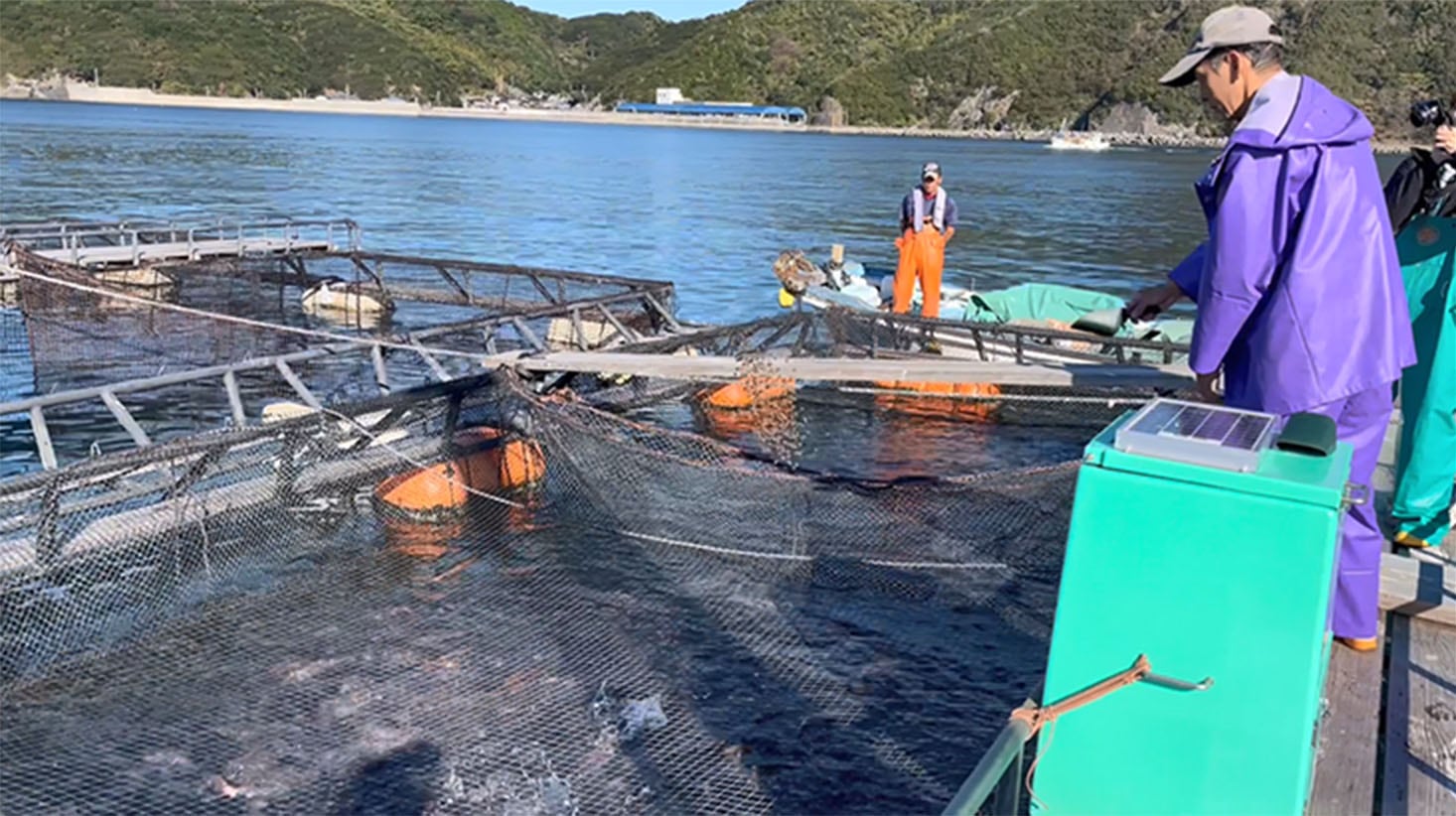

Feed Manufacturers Today
- Interviewer:
- First, could you briefly describe FEED ONE’s business?
- Mr. Hashimoto, General Manager of FEED ONE’s Aquatic Feed Division
- FEED ONE is a manufacturer that mainly produces and distributes compound feeds, which are indispensable for the production of meat, fish, eggs and dairy products. Our purpose is “providing feeds in order to create the future of food, support the lives of people and deliver happiness.”
- Interviewer:
- I’m broadly aware of the current environment surrounding marine resources. Can you describe what the current environment around fish farmers is like?
- Mr. Hashimoto:
- While livestock animals on land are fattened on feeds that are made mainly
from plant-derived materials, farmed fish are fed mostly on fishmeal (powdered fish).
In recent years, the price of fishmeal has been rising due to the poor level of wild fish catches, causing great pressure on the business environment for fish farmers.
As a manufacturer, we can’t help but raise the price of feeds when fishmeal prices are soaring. However, we don’t benefit from the price increase, which is solely the result of a significant rise in the price of raw materials.
I think that the price increase is inevitable. Having said that, if feed manufacturers raise their prices and in turn fish farmers raise the price of fish as an end-product, the consumption volume will decline due to the pricing impact. Even if the timing of raising prices is left to the discretion of each manufacturer/producer, given a continued decline in the consumption volume, the overall industry would become stuck and could be driven out of business eventually.
To date, there has been a certain degree of business segregation between feed manufacturers and fish farmers. In my opinion, the environment surrounding fish farmers wouldn’t turn around without a comprehensive perspective that also takes into consideration the consumers.
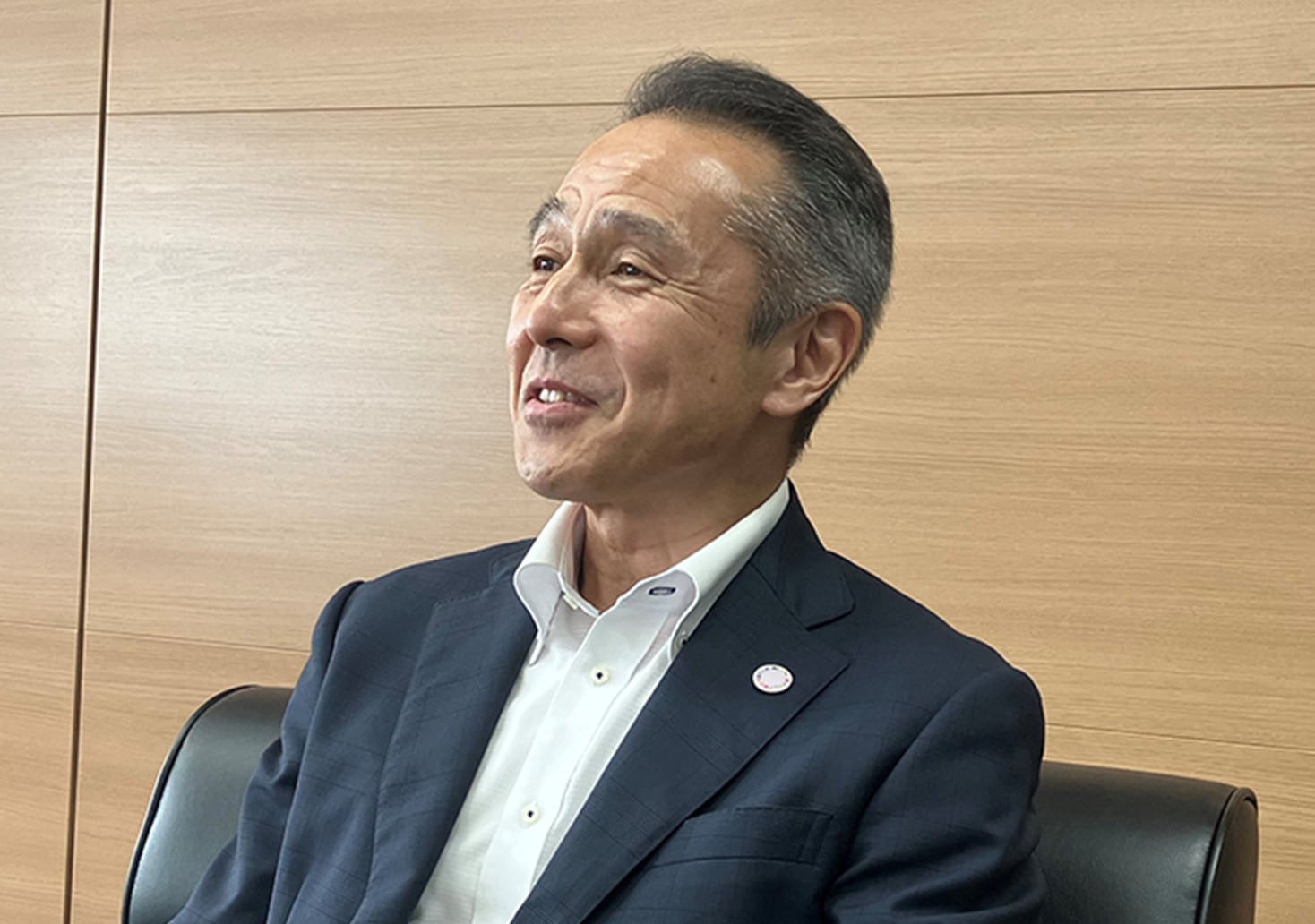

General Manager of FEED ONE’s Aquatic Feed Division
“Fishmeal-free Feeds” without Relying on Fish
- Interviewer:
- I’ve now understood that issues surrounding the fisheries industry are: how to (i) preserve marine resources; and (ii) meet the needs of the overall fishery industry. While recognizing these issues, what initiatives is FEED ONE promoting?
- Mr. Hashimoto:
- The two issues need to be addressed simultaneously. FEED ONE believes that using no fishmeal in feeds can be a solution to preserving marine resources and reducing the cost burden on fish farmers. Following our trial-and-error days to analyze the fish ecosystems, which remain largely unexplained compared to livestock animals, we eventually succeeded in developing and commercializing a fishmeal-free feed in August 2023.
- Interviewer:
- What is a fishmeal-free feed?
- Mr. Hashimoto:
- A fishmeal-free feed doesn’t use fishmeal as an ingredient. Although
manufacturers continued efforts to develop fishmeal-free feeds, finding alternatives to fishmeal remained
a challenging issue from the perspective of functionality and cost efficiency.
Fishmeal is a raw material that combines the amino acid composition essential to the growth of fish with a high level of palatability (to stimulate their appetite). Conventional fishmeal-free feeds required a number of costly micronutrients and additives as alternatives to fishmeal, resulting in higher production expenses. This also reduced the interest by the fish and caused an issue of variability in their growth. All in all, these fishmeal-free feeds were somewhat impractical from both a cost and functional perspective.
Our new feed product “Sustena ZERO” has achieved a high level of palatability as a result of adopting new ingredients, such as fish solubles (condensed cooking juices generated from fish processing, with the fat content removed). By optimizing the amino acid balance of the feed, the product also enables the same level of growth potential even at a lower production cost compared to traditional compound feeds using fishmeal. During the product development stage, we conducted an unprecedented large-scale field test in a marine fishpond with a capacity of 90,000 fish. We can therefore say that this product is the result of our pursuit of practicality for commercialization. - Interviewer:
- I see. The product is free from fishmeal, so it’s environmentally friendly and cost-effective. I think FEED ONE has been fully playing the expected role of a feed manufacturer.
- Mr. Hashimoto:
- No, I don't think this is enough at all. In the current environment where we have to pass on price hikes due to higher raw material costs, it’s clear that consumption will decline unless we do something effective. We must also create a new flow that leads to a recovery in consumer demand beyond the conventional perspective of feed manufacturers.
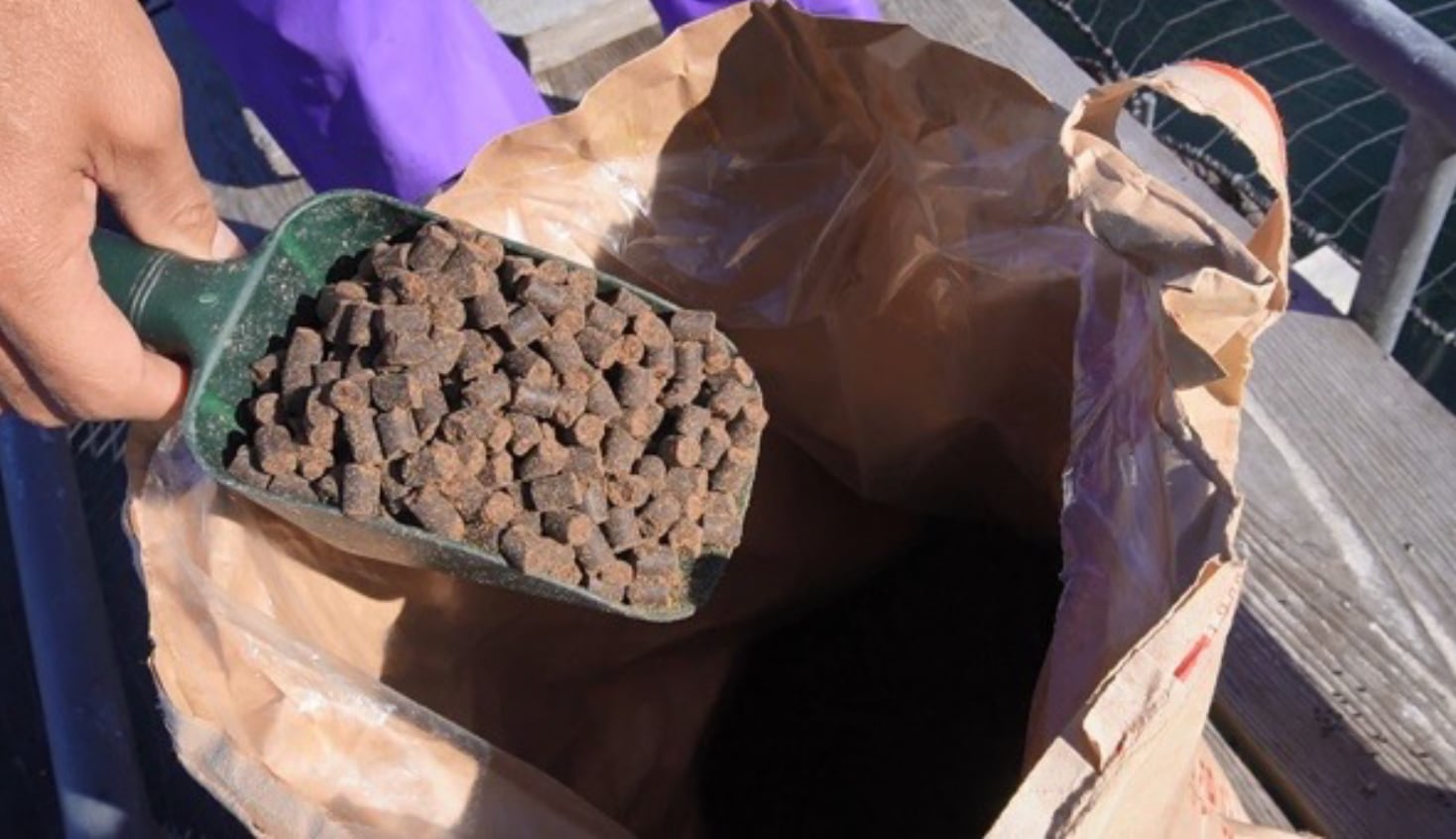

Challenges to Changing Consumers' Values
- Interviewer:
- You mentioned “also create a new flow that leads to a recovery in consumer demand.” What specific initiatives can you take?
- Mr. Hashimoto:
- I believe that “freshly caught” has been a primary consumer value towards
fish. In other words, what matters most is a degree of freshness. Many consumers decide to purchase fish
by balancing freshness with price, don’t they? In theory, higher prices lead to lower consumption. I think
that this is one aspect of what is happening today.
We don’t say that these traditional values are wrong. However, we believe that it’s possible to create other values. This is indeed sustainability-oriented branding as part of the SDGs. As a feed manufacturer, we would be able to actively engage in new value creation that leads to the added value of the SDGs, such as sustainable approaches taken to produce a certain species of fish and their contribution to global environmental conservation, which is among the world's most challenging issues. For example, we intend to make consumers more aware of our “Sustena ZERO” as a product with the added value for environmental conservation from the perspective of protecting natural resources by using no fishmeal. We’re also working to enhance our fish rearing technology. If this successfully decreases the amount of fish feeds required until shipping, we can reduce the amount of energy for producing feeds and the fish rearing period, which will lower CO2 emissions indirectly. We expect these initiatives to contribute to reducing greenhouse gas emissions and preventing global warming. In fact, Japanese red snappers, which weren’t supposed to be exported, are now seeing strong overseas demand, especially from European countries that have very high awareness of the SDGs, from the perspective of contributing to environmental conservation by rearing fish on fishmeal-free feeds.
As mentioned so far, I think it’s important to propose new values to our consumers. As part of our sustainability activities, we’ve been promoting the dissemination of information since last year. - Interviewer:
- Speaking of aquaculture, I understand that the carbon dioxide “blue carbon” absorbed in the ocean has been attracting public attention in expectation of the effect of reducing greenhouse gas emissions.
- Mr. Hashimoto:
- The current concept of blue carbon solutions mainly targets CO2 absorption by
marine plants. In my view, the target will expand into CO2 emissions from the overall ocean business going
forward.
I think that the CO2 emission reduction initiatives will also apply to fish farming business. In fact, feeds are the largest source of CO2 emissions in fish farming business. We’re currently striving to establish a technology to significantly reduce feed consumption. If successful, we’ll be able to further contribute to the SDGs, coupled with the use of fishmeal-free feeds. - Interviewer:
- I think you have a lot of room to contribute to the reduction of CO2 emissions
as a feed manufacturer.
Looking at the enhancement of consumer awareness, it seems that vegetable and meat products, for example, have something that easily appeals to consumers, such as vegetable farmer’s face photo as well as branded beef and pork. Meanwhile, I have the impression that fish products show nothing but “where fish are from.” Do you have even more room for increasing this customer appeal? - Mr. Hashimoto:
- We’ve been proposing a variety of regional branding for farmed fish. However,
it’s true that many of them are still non-branded products.
One of the reasons behind this may be a difficulty in demonstrating the brand value of fish products. For example, there are standards for the branding of fruits and vegetable, such as sweetness levels, but we have no clear indicators for fish at present.
That being said, there’s still something we can do. We’re now proactively working with SoftBank Corp. to create new standards for indicating the quality of fish products.
We believe that the true branding of fish products will be achieved if we can propose a clear differentiation in the fish rearing process as well as create a comprehensible standard for the value of farmed fish.
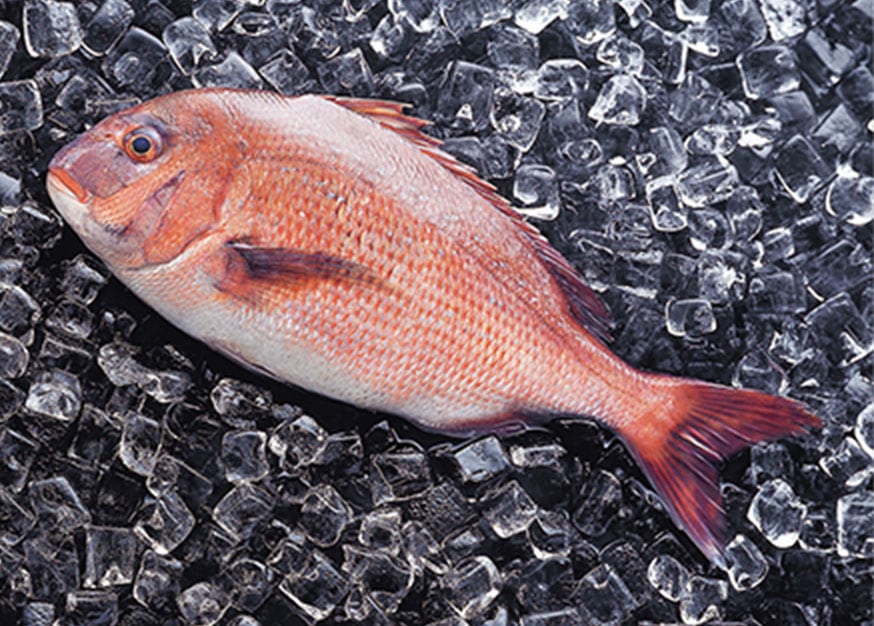

Postscript
This time FEED ONE, which is working towards environmental conservation and
innovative changes in consumer values from the perspective of the SDGs, talked with us to help raise
awareness of the current marine resources and fish farming industry.
It seems that consumers make a purchase decision based on the quality and price of products. I don’t think
it will take long until “how to breed fish (production process)” becomes a new standard for consumers.
As a first step to raise my awareness, I will try to ask about the rearing process when purchasing fish next
time.
Finally, I believe that in order to develop a sustainable society, it is important to create an environment
where “new initiatives” are accepted and appreciated. Aozora’s “with Blue” will continue to introduce
companies’ sustainable activities.
- Photo credit: FEED ONE
